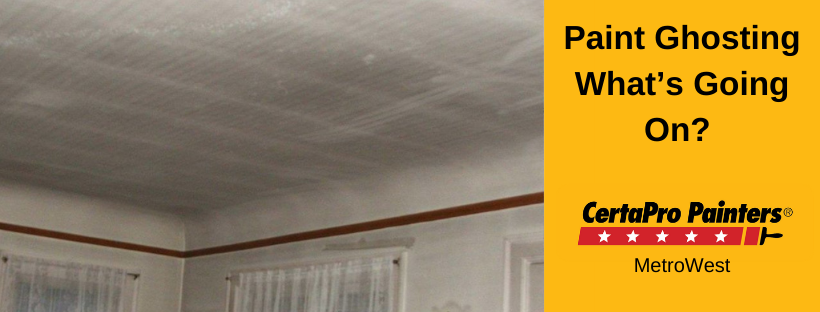
Tackling Paint Ghosting in Your Metro West Massachusetts Home
Posted on July 29, 2024
In Metro West Massachusetts, you might have encountered the term “ghosting” in the context of interior painting, and no, it’s not about spooky spirits or silent treatment. In the world of home maintenance, “ghosting” refers to streaks and stains on walls and ceilings, sometimes known as “soot staining” or “thermal tracking.”
If you’re noticing these issues in your home, you might be wondering if they’re caused by mold, paint problems, or something else. Fortunately, ghosting is a common issue with relatively straightforward solutions.
What is Paint Ghosting?
Paint ghosting appears as dark stains or faint, ghostly markings on your walls and ceilings. It’s caused by dust and debris gathering in specific areas and sticking to your paint. As particulates float through the air, certain conditions in your home cause them to accumulate, resulting in these unsightly streaks and stains.
Understanding the contributing factors can help you pinpoint the issue in your own home.
Causes of Paint Ghosting
Our homes in Metro West are subject to various environmental factors that can contribute to ghosting:
- Airflow and Temperature Variations: Dust and dirt can settle in areas with fluctuating temperatures. For example, if your attic or ceiling insulation is inadequate, cooler air can cause condensation, attracting dust and creating ghosting.
- Moisture and Heat Sources: Ghosting often appears near heat sources like lights, clothes dryers, or oven ranges, where warm air carries particulates upward. Poor insulation or gaps in window seals can also contribute to excess moisture and subsequent ghosting.
How to Address Paint Ghosting
Addressing paint ghosting requires more than just repainting over the marks. To achieve long-term relief, you need to tackle the root causes:
- Inspect Insulation: For ghosting on ceilings, check your attic insulation. Adding or improving insulation can help reduce condensation and prevent dust accumulation.
- Seal Drafts: Update window seals and check for drafts around doors and windows to minimize dust and moisture ingress.
- Control Moisture: Install exhaust fans in bathrooms and kitchens, and consider using a dehumidifier during humid months to control overall moisture levels in your home.
Practical Steps to Reduce Airborne Particulates
In addition to addressing the root causes, you can take everyday actions to reduce dust and debris:
- Use Mats and Remove Shoes: Place a bristly welcome mat at your entryway and ask visitors to remove their shoes to minimize dirt entering your home.
- Reduce Candle Use: Cut down on candles and ensure proper ventilation if you do use them.
- Regular Maintenance: Change air and furnace filters regularly, check and clean ventilation systems like dryers, and minimize the use of fireplaces or wood stoves.
- Cover Hot Light Bulbs: Use shades to cover hot light bulbs that can contribute to dust accumulation.
Repainting and Long-Term Solutions
Once you’ve addressed the root causes, clean your walls thoroughly before repainting. Use a stain-blocking primer to cover ghosting marks before applying a fresh coat of paint. If issues persist, consider larger changes to improve home conditions and reduce airborne debris.
For more personalized advice or to tackle ghosting effectively, contact CertaPro Painters of Metro West at 781-296-6044. Our experts can help you identify and address paint ghosting issues, ensuring a clean and polished finish for your home.
Looking for more home maintenance tips? Check out our other home improvement articles tailored for Metro West homeowners!





